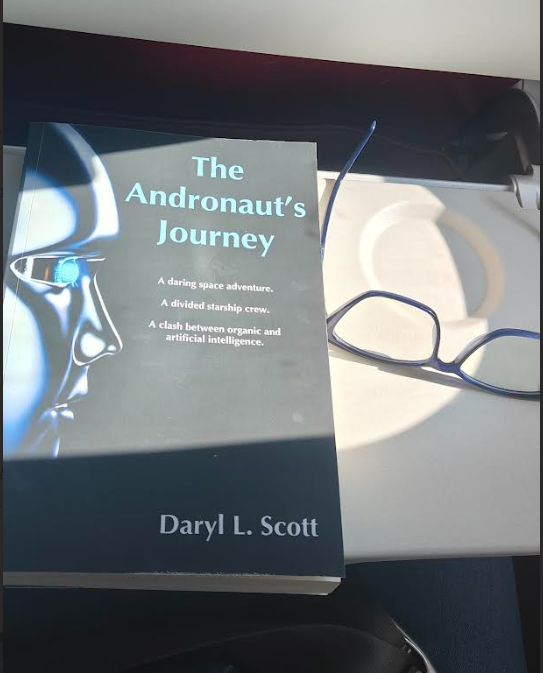
“A Pale View of Hills” is Kazuo Ishiguro’s debut novel, published in 1982. This is actually my third time diving into Ishiguro’s world. After being captivated by “Never Let Me Go” and “Klara & the Sun,” I couldn’t resist exploring more of his work.
The current book draws inspiration from the author’s cultural background. The narrative is delivered by Etsuko, a Japanese woman who relocated to England with her second husband. The story unfolds with an unanticipated visit from her younger daughter, Niki. This mother-daughter interlude serves as a backdrop to the central narrative.
Although they cherish their time together, an underlying tension exists. It seems both are avoiding a common topic: the suicide of Niki’s older sister, Keiko.
The conversation starts with Etsuko reminiscing about her first half of life in the 1950s. At that time, she was living in Nagasaki and expecting her first born, Keiko. During a sweltering summer, she forges a fleeting friendship with an older woman named Sachiko, who resides in a nearby cottage with her daughter, Mariko.
The two women possess contrasting personalities. Very soon it becomes quite evident that Etsuko isn’t entirely at ease with Sachiko’s lifestyle, particularly her involvement with an American man.
However, Etsuko’s discomfort goes deeper, and as the story progresses. It becomes clear that there is an unsettling aspect to her friend and her relationships.
A Reflection on Personal Struggles in Etsuko’s Story
The narrative also hints at the societal progression, particularly regarding the evolving role of women. A pivotal scene arises when a woman expresses a differing political stance from her husband. As a consequence of which, it evokes a sense of shock from the characters.
Additionally, the novel also explores the dynamics of living with and obeying in-laws. While Etsuko appears content to care for Jiro’s (her ex-husband) father, Ogata-san, during his extended stay in their apartment, Sachiko’s relationship with her uncle presents a contrasting dynamic. Or it could be that Etsuko is projecting her own anxieties about tradition onto Sachiko. The entire story might reflect Etsuko’s personal struggles. After all, the whole narrative is told through her eyes:
It is possible that my memory of these events will have grown hazy with time, that things did not happen in quite the way they come back to me today. But I remember with some distinctness that eerie spell which seemed to bind the two of us as we stood there in the coming darkness looking towards that shape further down the bank. (pg.41)
Etsuko and Sachiko’s Intertwined Lives
At the start of the flashback, Etsuko swiftly transitions from describing her own experiences living in Nagasaki immediately after WWII to describing Sachiko’s feelings within the same paragraph.
Niki, Etsuko’s surviving daughter, visits her to reassure her, saying she should have “no regrets for choices (you) once made.” This refers to Etsuko/Sachiko moving her young daughter from Japan to England, away from her father, to provide her with more opportunities and a better life.
In the flashback, Etsuko’s father-in-law comments, “Children become adults but they don’t change much.” This supports the theory that Keiko is Mariko, suggesting that the daughter’s troubles persisted from childhood into adulthood.
The histories of Etsuko and Sachiko are deeply intertwined. Etsuko, who lost a boyfriend and her family in the war, married a man who assumed a caretaker role. This distant, controlling husband seemed indifferent or oblivious when Etsuko, several months pregnant, frequently left their apartment at night to spend time with Sachiko. It’s unlikely he didn’t notice.
Similarly, after the war, Sachiko briefly lived with her uncle. Although he asked her to return after she moved out, she refused. Her feelings toward her uncle likely mirrored Etsuko’s feelings about her first husband: “It was nice of him to have invited me into his household. But I’m afraid I’ve made other plans now.” Sachiko reflects this sentiment, saying, “There’s nothing for me at my uncle’s house. Just a few empty rooms, that’s all. I could sit there in a room and grow old.”

Takeaway
The book is profoundly touching, evoking a nostalgic and poignant ambiance of regret, grief, and affection. Despite being Ishiguro’s first novel, “A Pale View of Hills” showcases the mastery of his craft in full bloom. He skillfully navigates his recurring themes of individual and communal memories, trauma, and the cultural contrasts between Japan and England.
In his exploration of memory and regret, Ishiguro possesses a unique ability to convey depth and resonance. What sets his writing apart is not what he explicitly states, but rather the unspoken nuances that permeate his prose. And this leaves us, the readers, to directly infer the characters’ inner turmoil.
I have to admit, I felt a bit underwhelmed when I finished it, but I keep finding myself thinking about it long after I put it down. I wholeheartedly recommend immersing yourself in this captivating book.



